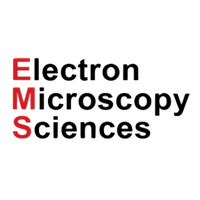
- Collections
NG10 eyepiece reticles, standard globes and circles (EMS)
Imperial Standard Graticule - NG10
In this graticule the circle areas double progressively, hence the diameters alter by Root 2, so that the size classes can form a continuation of the standard series of sieves for particle sizing. Each particle is assigned to a size class defined by two adjacent circles, which represent the size limits of that class. Thus the distribution of size is obtained in terms of the diameter of circles having the same projected area as the particles. This method will cover particles in the range 150 micron to 0.38 micron. The size distributions with respect to their number and weight are determined separately. Final results are calculated as cumulative percents.
Originally designed by the National Coal Board for use in coal mining.
| Pattern | Description | Diameter | Code |
| NG10 | British Standard (BS3625/BS3260) Globes & Circles. Surface chrome image. |
16mm | EMS68026-16 |
| 19mm | EMS68026-19 | ||
| 21mm | EMS68026-21 |
The use of the eyepiece graticules shown in this section makes it possible to analyse specimens containing particles as an alternative, or in addition to, sieving. Graticules for particle size analysis are particularly popular when there are only limited quantities of particles or where particles are smaller than 50 microns in diameter. Typical substances analysed are sand grains, soil particles, plant seeds, fertilisers, abrasives, liquid droplets, pigments, pulverised coal, silica, fibres, and fine dust.
The basic principle employed is to compare particles to the globes and circles of varying sizes that appear on the graticule - dark particles being compared to solids globes, and light or transparent ones to the circles. Naturally the procedure varies with the graticule concerned, more information about which is given below.
Please note that for calibration, the circles and globes will represent particles smaller in diameter by the magnification of the objective.
* Ordering Schedule
This item is available for back-order where 0 stock is listed.
We order from this manufacturer weekly, with an estimated lead time of 4 weeks.
This is the estimated lead time, based on the average time taken previously to fill orders from this particular supplier.
Lead times are from when we receive your order until when we fill your order. For delivery times, please see shipping information below.
